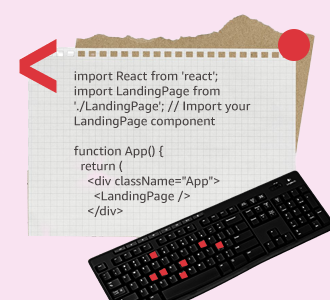
Proficiency in React.js remains a highly sought-after skill set for developers aspiring to excel in their careers. As we navigate through 2024, mastering the following top 10 React.js developer skills can significantly bolster your chances of securing lucrative opportunities in the industry. From foundational knowledge in JavaScript to expertise in state management and component-based architecture, these skills encompass the essential toolkit for crafting robust and scalable web applications in the React.js ecosystem. Embracing modern web development paradigms such as server-side rendering and progressive web app (PWA) development further enhances your versatility as a React.js developer, ensuring your relevance and competitiveness in the dynamic tech job market of 2024.
React.js, commonly referred to as React, is an open-source JavaScript library primarily used for building user interfaces (UIs) for web applications. Developed by Facebook, it provides a declarative, component-based approach to building interactive UIs. One of the key features of React.js is its component-based architecture. Developers can create reusable UI components, each encapsulating its own logic and rendering behaviour. It utilizes a virtual DOM (Document Object Model) to efficiently update and render UI components. When the state of a component changes, react compares the virtual DOM with the actual DOM and only applies the necessary updates, resulting in improved performance and faster rendering.
Additionally, React.js allows developers to write JSX (JavaScript XML), which is a syntax extension that enables the mixing of HTML-like code with JavaScript. JSX makes it easier to describe the UI components’ structure and allows for a more intuitive development experience. React.js is often used in conjunction with other libraries and frameworks, such as Redux for state management, React Router for routing, and Axios for handling HTTP requests. Its popularity and extensive ecosystem have made React.js a dominant force in the world of front-end web development, powering applications for companies ranging from start-ups to Fortune 500 enterprises.

React.js offers a multitude of benefits that make it a preferred choice for building dynamic and interactive user interfaces in web applications. Below are some of the top benefits of using React.js:
To embark on a successful journey as a React.js developer, learning a specific set of technical skills is paramount. Here is a list of skills to become a successful React.js developer:
To excel as a proficient React.js developer, understanding the key concepts in HTML and CSS is essential. Having knowledge on semantic HTML mark-up ensures the creation of accessible and SEO-friendly web applications, while proficiency in CSS allows for precise styling and layout design. Familiarity with responsive design principles enables developers to build applications that adapt seamlessly across various devices and screen sizes.
Additionally, grasping CSS pre-processors like Sass or Less enhances productivity by enabling the use of variables, mixins, and other advanced features. Knowledge of CSS frameworks such as Bootstrap or Tailwind CSS provides developers with pre-built components and styling utilities, expediting the development process. Furthermore, expertise in CSS-in-JS libraries like Styled Components or Emotion allows for the encapsulation of styles within React components, promoting modularity and reusability. Lastly, CSS animations and transitions empowers developers to create engaging and interactive user experiences within React applications.
Understanding JavaScript’s core concepts such as functions, closures, and prototypes lay a strong foundation. ES6+ features like arrow functions, destructuring, and spread/rest operators enhances code readability and productivity. Having a strong grip of asynchronous JavaScript programming with Promises, async/await, and handling events ensures efficient handling of data flow within React applications. Also, insights of JavaScript frameworks and libraries beyond React, such as Node.js and Express.js, broadens one’s skill set and fosters versatility in full-stack development. Staying updated with JavaScript’s evolving ecosystem allow developers to tackle complex challenges and innovate in the dynamic world of React.js development.
Redux is integral for becoming a proficient React.js developer. Redux’ s principles, including single source of truth and unidirectional data flow, facilitates efficient state management in complex applications. Competency in Redux middleware, such as Redux Thunk or Redux Saga, enables handling asynchronous actions and side effects seamlessly within React components. Moreover, Redux DevTools aids in debugging and monitoring application state changes, enhancing development efficiency. Redux’s ecosystem, including libraries like Reselect for memoized selectors, optimizes performance and scalability in React applications. Advanced Redux patterns ensure developers can leverage Redux to its fullest potential, creating robust and maintainable React applications.
Webpack is crucial for React.js developers to efficiently bundle and manage their project’s assets. Proper knowledge in Webpack configuration allows for optimizing code splitting, lazy loading, and asset optimization, resulting in faster load times and improved performance. Proficiency in integrating Webpack with React projects enables seamless handling of JavaScript modules, CSS, and other assets. Strong command with loaders and plugins extends Webpack’s capabilities, facilitating tasks like transpiling JSX, optimizing images, and enabling hot module replacement for faster development iterations. Continuous learning and exploration of Webpack’s latest features ensure React.js developers can effectively leverage its power to streamline their development workflow and enhance their project’s scalability and maintainability.
For React.js developers, learning both API integration and Continuous Integration/Continuous Deployment (CI/CD) pipelines is crucial for building and deploying scalable and efficient applications. Understanding RESTful API principles and HTTP methods allows seamless communication between React components and backend services, enabling dynamic data fetching and updating. Skilfulness in tools like Axios or Fetch API simplifies making HTTP requests and handling data from external APIs within React applications.
Concurrently, if a developer has strong grip over CI/CD pipelines and utilizes platforms like Jenkins or GitLab CI, automates the build, testing, and deployment processes, it results in rapid and reliable delivery of React applications. Integrating API testing within CI/CD pipelines guarantees the robustness and reliability of API interactions, enhancing overall application quality. Embracing CI/CD practices enables React.js developers to streamline development workflows, accelerate time-to-market, and deliver value to end-users consistently. Adaptation to evolving technologies in both API integration and CI/CD methodologies ensure React.js developers stay at the forefront of modern web development practices.
Git is essential for React.js developers to effectively manage codebase collaboration and version control. Git fundamentals such as branches, commits, and merges facilitates seamless collaboration within development teams, ensuring code integrity and version history clarity. Experience in Git workflows, such as Git Flow or GitHub Flow, streamlines development processes and enhances project organization and productivity. Familiarity with Git commands and operations enables React.js developers to efficiently navigate and manipulate repositories, facilitating code reviews and debugging. Exploration of advanced Git features and best practices entitle React.js developers to optimize collaboration, version control, and project management in their development workflows.
In React.js development, JSX (JavaScript XML) is a fundamental aspect, allowing developers to write HTML-like code within JavaScript. Learning of JSX syntax enables the creation of declarative and expressive React components, enhancing code readability and maintainability. Understanding JSX’s integration with JavaScript expressions facilitates dynamic content rendering and logic implementation directly within JSX mark-up. JSX also enables developers to leverage React’ s virtual DOM efficiently, optimizing performance and rendering speed. Therefore, having insights of JSX conventions empower React.js developers to leverage its full potential in building sophisticated and interactive user interfaces.
For React.js developers, knowing about Document Object Model (DOM) is essential for building dynamic and interactive user interfaces. DOM manipulation techniques enable React components to efficiently update and render UI elements in response to user interactions and state changes. Leveraging React’ s virtual DOM abstraction optimizes performance by minimizing actual DOM manipulations, resulting in faster rendering and improved user experience. DOM events and event handling in React enables developers to create responsive and interactive applications, enhancing user engagement. Usage of DOM APIs help React.js developers to effectively utilize the DOM as a foundational concept in building modern web applications.
Node.js and NPM (Node Package Manager) is crucial for React.js developers to leverage the full potential of the JavaScript ecosystem. Node.js enables developers to use JavaScript not only on the frontend but also on the server-side, facilitating full-stack development. The ability to use NPM allows developers to manage project dependencies, install packages, and execute scripts efficiently, enhancing project scalability and maintainability. NPM scripts enables automation of common tasks like building, testing, and deploying React applications, streamlining development workflows. Thus, Node.js and NPM‘s features, permit React.js developers to build robust, scalable, and performant applications that span both client and server environments.
TypeScript is crucial for React.js developers to enhance code quality, maintainability, and scalability of their applications. TypeScript’s static typing system enables developers to catch potential errors during development, leading to more robust and reliable codebases. Experience in TypeScript’s advanced features such as interfaces, generics, and type inference facilitate creating more expressive and self-documenting React components. Familiarity with TypeScript’s tooling and integration with popular editors like Visual Studio Code enhances developer productivity and codebase consistency. TypeScript’s evolving features authorize React.js developers to grasp its full potential in building modern and scalable web applications with confidence.
Mastering the top 10 React.js developer skills is essential for staying competitive and thriving in 2024. Strong knowledge of HTML, CSS, and JavaScript forms the foundation for crafting dynamic and responsive user interfaces, while Redux enables efficient state management in complex applications. Webpack streamlines project bundling and optimization, while Node.js and NPM facilitate full-stack development and package management. Embracing TypeScript enhances code quality and maintainability, while knowledge of JSX and API integration ensures seamless data handling and interaction.
Moreover, experience with CI/CD pipelines ensures rapid and reliable deployment of React.js applications, driving continuous innovation and delivering value to users in the ever-evolving digital landscape of 2024. By honing these skills and staying abreast of emerging technologies, aspiring React.js developers are equipped to thrive and make meaningful contributions in the dynamic field of web development.
Select your preferred mode of engagement and let’s move forward together.
If you have any questions, speak with our experts at your earliest convenience or preferred time